- News
- Reviews
- Bikes
- Accessories
- Accessories - misc
- Computer mounts
- Bags
- Bar ends
- Bike bags & cases
- Bottle cages
- Bottles
- Cameras
- Car racks
- Child seats
- Computers
- Glasses
- GPS units
- Helmets
- Lights - front
- Lights - rear
- Lights - sets
- Locks
- Mirrors
- Mudguards
- Racks
- Pumps & CO2 inflators
- Puncture kits
- Reflectives
- Smart watches
- Stands and racks
- Trailers
- Clothing
- Components
- Bar tape & grips
- Bottom brackets
- Brake & gear cables
- Brake & STI levers
- Brake pads & spares
- Brakes
- Cassettes & freewheels
- Chains
- Chainsets & chainrings
- Derailleurs - front
- Derailleurs - rear
- Forks
- Gear levers & shifters
- Groupsets
- Handlebars & extensions
- Headsets
- Hubs
- Inner tubes
- Pedals
- Quick releases & skewers
- Saddles
- Seatposts
- Stems
- Wheels
- Tyres
- Health, fitness and nutrition
- Tools and workshop
- Miscellaneous
- Tubeless valves
- Buyers Guides
- Features
- Forum
- Recommends
- Podcast
TECH NEWS
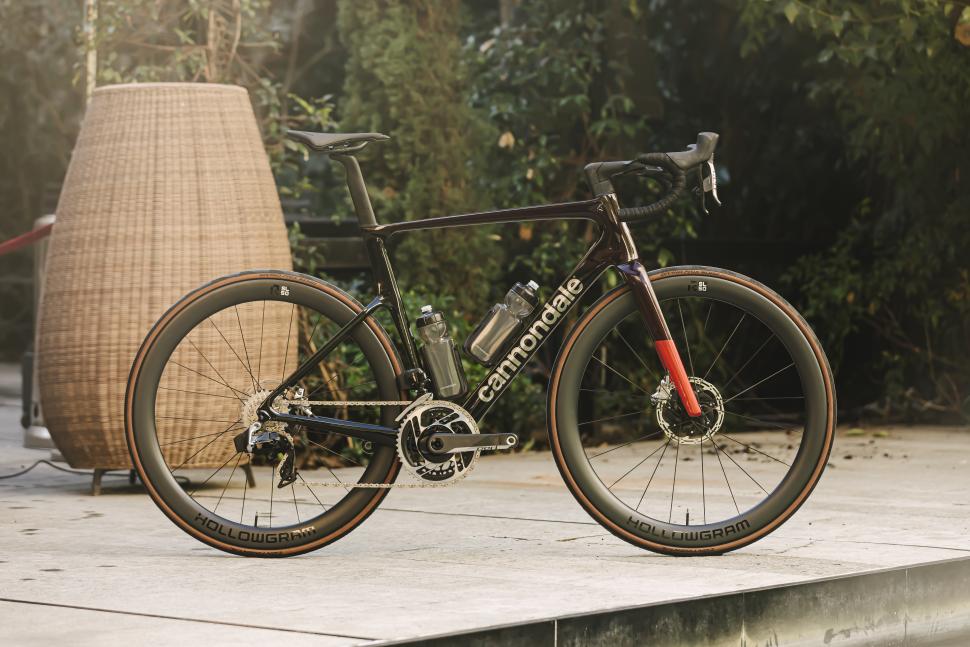 2023 Cannondale Supersix Evo 4 launch Spain10
2023 Cannondale Supersix Evo 4 launch Spain10Cannondale launches new aero-optimised SuperSix Evo 4 with threaded bottom bracket — all the details + first ride review
Unlike some bike manufacturers, Cannondale likes to do things differently when it comes to media presentations and claims - and I like that. These days, the words ‘faster, better, lighter’ are liberally tossed about to hypnotise the international cycling media’s cognitive thought process, often leading to the same generic launch report drivel. This wasn’t the case at the press camp for the all-new SuperSix where Cannondale CMO Richard Prenderville confidently quipped: "We’ll let the bike do the talking on the test ride".
Of course, we were serenaded with a detailed product presentation but the only real trumpeting came from the news of Lab71 and what it means for the brand and its many followers.
What’s new?
BSA threaded bottom bracket
New fork and aero-optimised frame
Hollowgram R-SL 50 wheels
Cannondale x MomoDesign SystemBar R-One
Delta Steerer tube with full integration
No steering stop pin
New provocative paintwork
With a bike as important as the new SuperSix Evo, it’s always worth looking at the model lineage for context. The SuperSix Evo came to life in 2011 and took a large portion of its design language from the original SystemSix of 2006/07 - it was the first bike introduced by Cannondale to employ playful handling dynamics, prioritising lightweight and stiffness over everything else. It was an instant hit and remains a cult classic.
Fast forward to 2015 and Cannondale ramped things up with the SuperSix Evo 2. While it retained the classic round tube shaping it benefited from stiffer underpinnings, a lower drag coefficient and better aerodynamics. A disc-brake version followed in 2017 with a thru-axle front and quick-release rear axle - but the design was starting to show its age and the platform was in desperate need of something more contemporary.
And that’s exactly what we got when Cannondale launched the new-look SuperSix Evo in 2019. While many were quick to dismiss the looks (me included), citing it represented too much of a design departure from its forebear, it quickly garnered a cult following - retaining much of the original bike’s handling characteristics and lightweight demeanour. Much of the new SystemSix made its way into the design language and this culminated in a bike 25w faster than its predecessor.
The bike, however, wasn’t without fault and the first batch had some niggles. The cable integration around the headset wasn’t the greatest, the steering stop pin was rumoured to cause cosmetic damage during transport and the like, and the non-descript paintwork was criticised for doing little to accentuate the bike’s dynamic character - the latter issues were eventually remedied but front end cable integration remanded a sore point for SuperSix owners.
Contemporary nip and tuck
At first glance, you’ll be forgiven for mistaking the new SuperSix for its predecessor. The changes are not glaringly obvious but significant enough to make a big difference in the way the bike performs. The Evo 3 was the base for the new model and the goal was to make it faster, using learnings from the current SystemSix.
The most notable tweaks originate at the front end where an aerodynamically optimised fork eschews the downtube integration of before in favour of a cleaner aesthetic and separate crown interface. The headtube area has also gone under the knife and now features full integration thanks to the combination of what Cannondale calls a Delta Steerer tube, which allows for seamless integration of cables thanks to a slimmer, rounded-off fork steerer and two new cockpits: a Conceal stem or MomoDesign bar-stem.
The Conceal stem is standard on all entry-level models and offers first-class cable management at a cheaper price point. Flashier models benefit from a brand-new bar/stem arrangement compliments of a collaboration between Italian automotive firm MomoDesign and Cannondale - it’s called SystemBar R-One. It looks great. There’s also a Vision Trimax Carbon aero bar available on the Hi-Mod 2, Carbon 1 and Carbon 2 models.
The other big amendments pertain to the rear end. Speaking to Cannondale design engineer, Dr Nathan Barry, he was quick to point out that the key drag area on any bike is the seatpost and seat tube - so this was an easy win to make the bike faster. As such, the bike utilises a much slimmer, almost SystemSix-like seatpost and seat-tube which tapers more towards the bottom of the bike. Not only does this configuration ensure optimal aerodynamics but better compliance, too - particularly around the lower section near the bottom bracket as this area is less affected by airflow. These small yet significant changes were achievable owing to the relocation of the Di2 battery which now resides in the bottom bracket area. The seatstays have also been dropped and reshaped along with the dropouts. Standard 12mm thru-axles secure the wheels in place.
Looking at the spread of colourways, there are 12 different options to choose from and I can confirm the visual drama is far more engaging than the consumer versions of SuperSix Evo 3. Much of this comes down to Cannondale’s CMF philosophy - colour, material and finish. The graphic design is far more contemporary and representative of the brand - and there’s enough variation in terms of the colour spectrum to sate both the adventurous and those who prefer riding incognito.
A slippery and lightweight facade
The goal for the SuperSix Evo 4 project hinged around speed and improving the bike’s wind-cheating form. With this in mind, Cannondale identified three areas of improvement: weight, aerodynamics and integration.
This started in the wind tunnel where the new model’s form was meticulously sculpted and refined - to reduce its CDA to such a degree that it’s far closer to the SystemSix than the previous model and more in line with current aero road bikes across a wide range of yaw angles. The cumulative tweaks have resulted in an 11W saving at 45km/h over the SuperSix Evo 3 and 12w over the current Trek Emonda SLR.
To ensure the bike kept its lightweight form (the SuperSix Evo 3 was a little heavier than previous iterations) the engineers managed to shed significant weight thanks to a newly introduced carbon-fibre layup and a slew of carefully considered component choices. Dubbed Series 0 and only available on the top-tier Lab71 versions, this special fibre and nano-resin composite sheds 40g grams over the Himod at 770g for a painted 56cm frameset. As such, a fully built Cannondale SuperSix Evo Lab71 will tip the scales at the UCI minimum weight limit of 6.8kg - that’s some 500g lighter than the range-topping SuperSix Evo 3. In size 56, the Hi-Mod comes in at 810g while the regular Carbon frameset registers 930g.
Another area the SuperSix Evo has managed to reduce weight is the rolling stock department. The HollowGram 45 SL Knot wheels of before have been replaced by new HollowGram R50 wheels. Available in both R-SL 50 (1,520g) and R-S 50 (1,620g) guises, the wheels conform to the contemporary standards of low weight and wider rubber. These 50mm-deep wheels are lightweight in design boasting a hooked rim bead complete with respective internal and external widths of 21- and 32mm.
The SuperSix Evo 4 also ushers in a new era for the bike with a threaded BSA 68 bottom bracket. While this brings about easier serviceability and compatibility across the crankset spectrum, it also rings the death knell for the fabled Cannondale Si Hollowgram and Si cranksets, which have been around for over two decades.
There’s also new Gripper Aero bottles and ReGrip Aero Cages which perfectly align with the downtube and seat tube to help smooth airflow and further reduce drag. The cages also accept standard round bottles.
What hasn’t changed?
All the changes to the bike’s tube profiling and carbon-fibre recipe have done little to affect the geometry which remains largely unchanged over the previous model. Everything from the near-parallel head- and seat-tube angles to the stack and reach are identical and will feel familiar and natural to current SuperSix owners.
Sizing remains pretty much the same, too, with options in most of the popular sizes: 44, 48, 51, 54, 56, 58 and 61 (sizes 60 and 62 have been reduced to 61).
Tyre clearance is still rated at 30mm but can - at a stretch - accommodate widths of up to 34mm, which is welcomed for those who prefer a cushier ride or enjoy mild gravel.
Cannondale SuperSix Evo 4 Hi-Mod - Ride impression
One thing the design team at Cannondale has an incredible knack for is ensuring the soul of the SuperSix Evo is unsullied with every passing iteration. The new model is unsurprisingly stiff around the headtube, bottom bracket and chainstays and this brings an assuring sense of familiarity to the package. It feels just like the previous model, only tighter and more refined.
As a longtime SuperSix Evo rider and owner of all three previous generations, I was never in doubt of the SuperSix Evo 4’s playful character. It’s super eager and responsive to pedal inputs and accelerates with ease - this is most notable when powering out of the saddle. The biggest change and the most tangible difference between the new model and its forebear is the level of comfort that Cannondale has managed to stitch into the ride without compromising any other area. The seat tube and seat stays are superbly compliant and iron out every road imperfection and pockmark. This coupled with the Hollowgram R50 wheels and stretched tyre footprint of the 25c Continental Grand Prix 5000s stand out as defining characteristics of the new bike.
The 54km test loop - although well designed for showcasing the SuperSix Evo 4’s abilities - felt a bit too short so I extended it to just under 100km. I headed into the mountains to play a bit more and better test its climbing, descending and aerodynamic abilities by tackling the notorious Els Angels climb. At 10km long and taking in 400m of elevation gain, it proved the ideal test bed for putting my mind at ease and answering some of the questions I had about wheel depth and the way it reacts to steeper gradient pitches. The gradient of Els Angels is such that it steps up in phases with flat sections and a small downhill before spiking again towards the summit.
The initial slopes are the steepest and presented the ideal situation to stretch the climbing legs of the Evo 4. Regardless of whether you prefer climbing in a seated or out-of-the-saddle position, you’re able to keep a comfortable pace and can feel the bike actively inch forward with every pedal stroke. It feels great and this responsive character keeps willing you to ride harder and pace things faster. It was fairly blustery on the day and a strong easterly wind was felt over the duration of the climb - something that slowed progress but didn’t adversely impact bike stability or handling.
My initial thoughts when I first saw the bike was that the 50mm were too deep and perhaps a bit overkill but - in reality - they complement the package well. Despite the odd unavoidable side gust, the wheels track accurately and remain predictable even in crosswinds. This is welcomed during descending situations where bike positioning is key to going faster in the corners. As such, the SuperSix Evo 4 handles like it’s on rails - sending detailed information about what’s happening below through the frame and pedals. The handling is so sorted that it inadvertently makes you a faster rider. This holds true even on the choppiest of surfaces where the ride quality and frame compliance helps keep the tyres in contact with the road surface.
And the flats? Well, you guessed it - it certainly gives the sensation of speed and feels very much like a bona fide aero road bike, only lighter and more agile. To me, it’s a natural evolution of the model it replaces, besting it in all the areas that needed work: weight, cable management and visual drama. Aerodynamics is a tough one to quantify or assess in the real world so I can’t objectively say it’s faster at a particular speed but the whole package feels more refined than before. It’s definitely quicker on the ups and downs, and more dynamic through a series of lefts and rights.
The Cannondale SuperSix Evo 4 is the new benchmark when it comes to out-and-out performance, handling and compliance, perfectly balancing all three with no compromises. While its American rivals are yet to reveal their new takes on the lightweight bike concept, there’s a new king in town and it’s going to take a lot of doing to usurp it.
Cannondale SuperSix pricing, range and availability
The SuperSix Evo 4 is available in regular carbon, Hi-Mod and Series 0 layups - the latter, however, is exclusive to the Lab71 model. All bikes come in disc-brake only guise, no rim-brake models are available. Pricing starts at £6,250 and climbs to £12,500 for the Lab71, the cheapest option being the Hi-Mod frameset at £3,750.
Five models are available from launch including two framesets - Lab71 and Hi-Mod.
Cannondale SuperSix Evo Lab71 - £12,500 (£4,750 frameset)
Shimano Dura-Ace Di2 R9200 12-speed (52/36T, 11-30T), Hollowgram R-SL 50 wheels, Continental GP5000 25C tyres, Cannondale SystemBar R-One MomoDesign bar-stem, CeramicSpeed BSA BB, Cannondale C1 Aero 40 seatpost, Fizik Vento Argo 00 Carbon saddle, Cannondale wheel sensor
Cannondale SuperSix Evo Hi-Mod 1 - £10,500 (£3,750 frameset)
SRAM Red eTap AXS 12-speed (48/35T, 10-28T), Hollowgram R-SL 50 wheels, Continental GP5000 25C tyres, Cannondale SystemBar R-One MomoDesign bar-stem, SRAM DUB BSA, Cannondale C1 Aero 40 seatpost, Prologo Dimension Nack Carbon saddle, Cannondale wheel sensor
Cannondale SuperSix Evo Hi-Mod 2 - £8,250
Shimano Ultegra Di2 R8200 12-speed (52/36T, 11-30T), Hollowgram R-SL 50 wheels, Continental GP5000 25C tyres, Vision Trimax Carbon Aero bar, Cannondale C1 Conceal stem , Shimano BSA 68, Cannondale C1 Aero 40 seatpost, Prologo Dimension TiRox NDR saddle, Cannondale wheel sensor
Cannondale SuperSix Evo Carbon 1 - £6,750
SRAM Force AXS 12-speed (48/35T, 10-33T), Hollowgram R-S 50 wheels, Vittoria Rubino Pro 25C tyres, Vision Trimax Carbon Aero bar, Cannondale C1 Conceal stem, SRAM DUB BSA, Cannondale C1 Aero 40 seatpost, Prologo Dimension TiRox NDR saddle, Cannondale wheel sensor
Cannondale SuperSix Evo Carbon 2 - £6,250
Shimano Ultegra Di2 R8100 12-speed (52/36T, 11-30T), Hollowgram 45 R wheels, Vittoria Rubino Pro tyres, Vision Trimax Carbon Aero bar, Cannondale C1 Conceal stem, Shimano BSA 68, Cannondale C1 Aero 40 seatpost, Prologo Dimension STN NDR saddle, Cannondale wheel sensor
Aaron is the editor of off-road.cc. He completed his BA honours at the University of Cape Town before embarking on a career in journalism. As the former tech editor of Cyclingnews and Bike Perfect, digital editor of Bicycling magazine and associate editor of TopCar, he's travelled the world writing about bikes and anything with wheels for the past 17 years. A competitive racer and Stravaholic, he’s twice ridden the Cape Epic, raced nearly every mountain bike stage race in South Africa and completed the Haute Route Alps. He's also a national-level time triallist and eSports racer, too - having captained South Africa at both the 2022 and 2023 UCI Cycling eSports World Championships.
Latest Comments
- ktache 2 hours 25 min ago
The batteries were not the easiest to find, and the brackets broke easily. The switch was far better than the D cell quick release ever readys that...
- ktache 2 hours 52 min ago
There are people out there who will make you the belt out of your old tyre.
- chrisonabike 2 hours 53 min ago
Furry dice and an air freshener for your helmet.
- AidanR 3 hours 5 min ago
Looking at the pictures in the linked article, the bikes aren't actually inconsiderately parked. The only issue is that they're on private property...
- Simon E 3 hours 41 min ago
Ah yes, those are hopefully not the 'master craftsmen' that has constructed a wide range of shoddy Italian cars and motorbikes over the years with...
- Simon E 4 hours 3 min ago
A SuperSix is definitely not an all-rounder....
- JLasTSR 4 hours 9 min ago
Since most of.my clothes come.from.charity shops.or the eBay nearly for.nothing clothing section I don't tend.to.worry if they wear out, I am also...
- chrisonabike 4 hours 55 min ago
Just get them to walk a treadmill - or better, ride exercise bikes to power path lighting.
- AidanR 5 hours 31 min ago
So his advisers were trying to move funds around to cover losses, but in a way that needlessly created additional liabilities? It would have been...


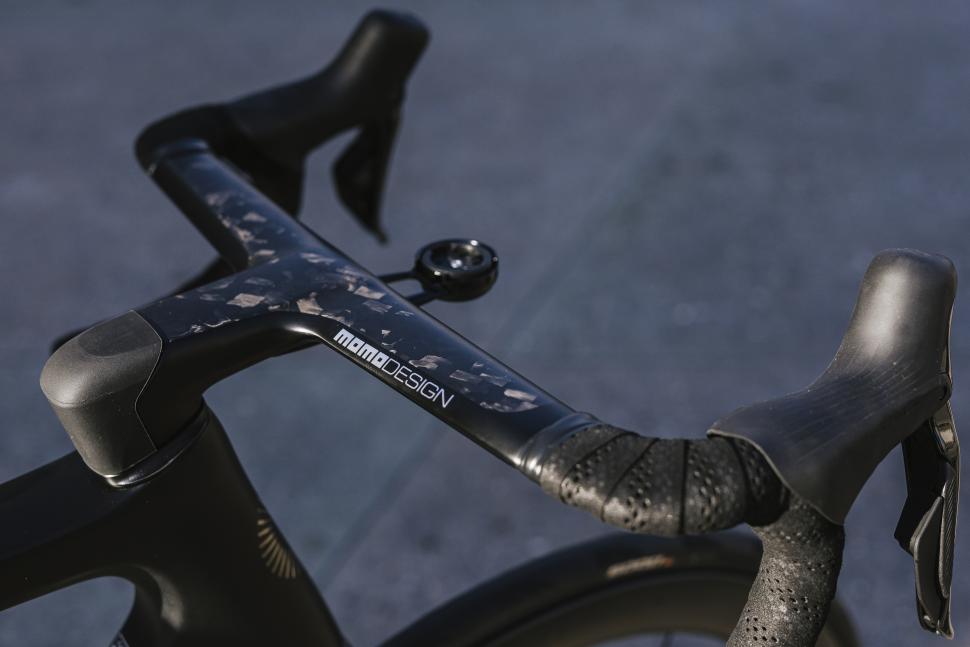
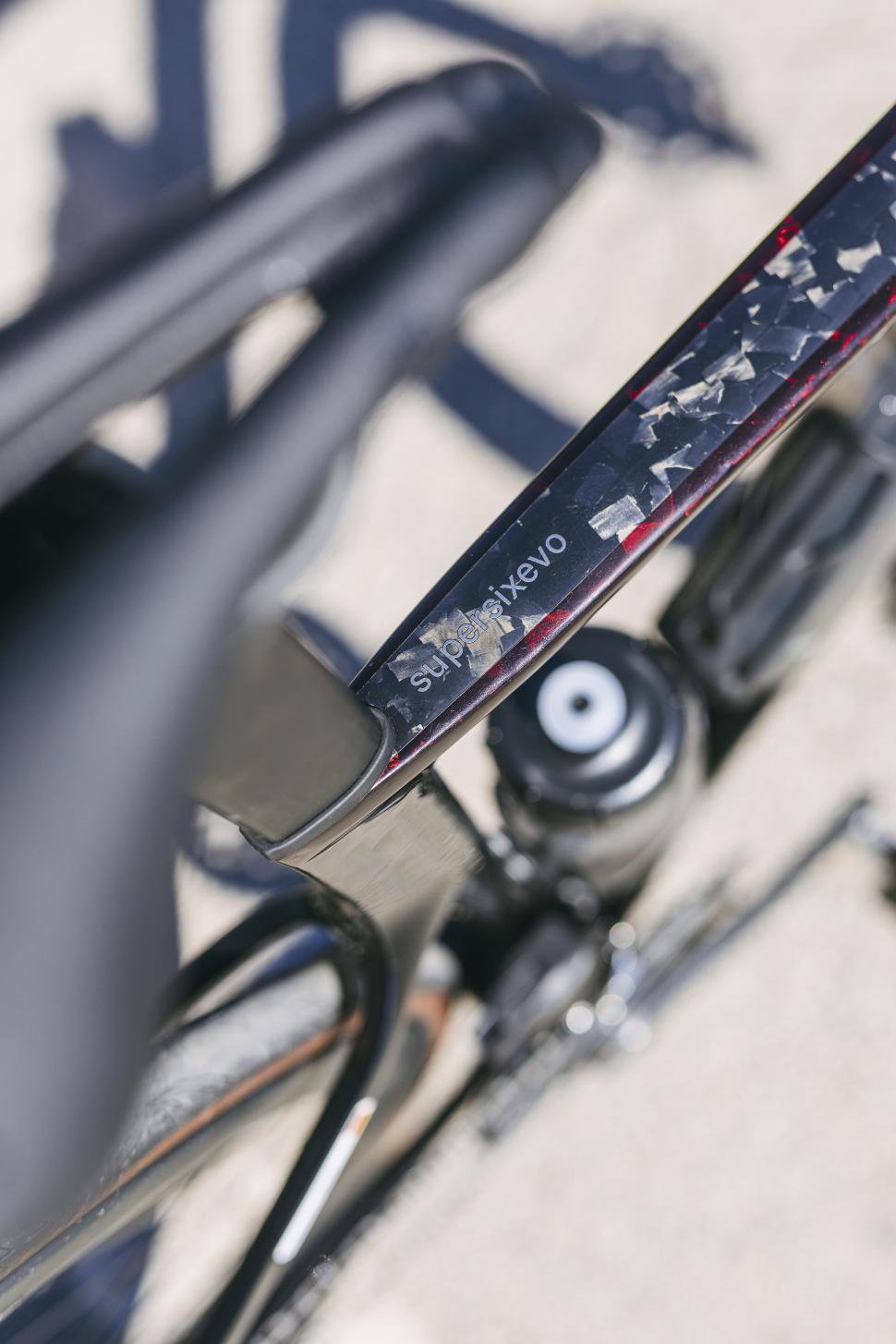
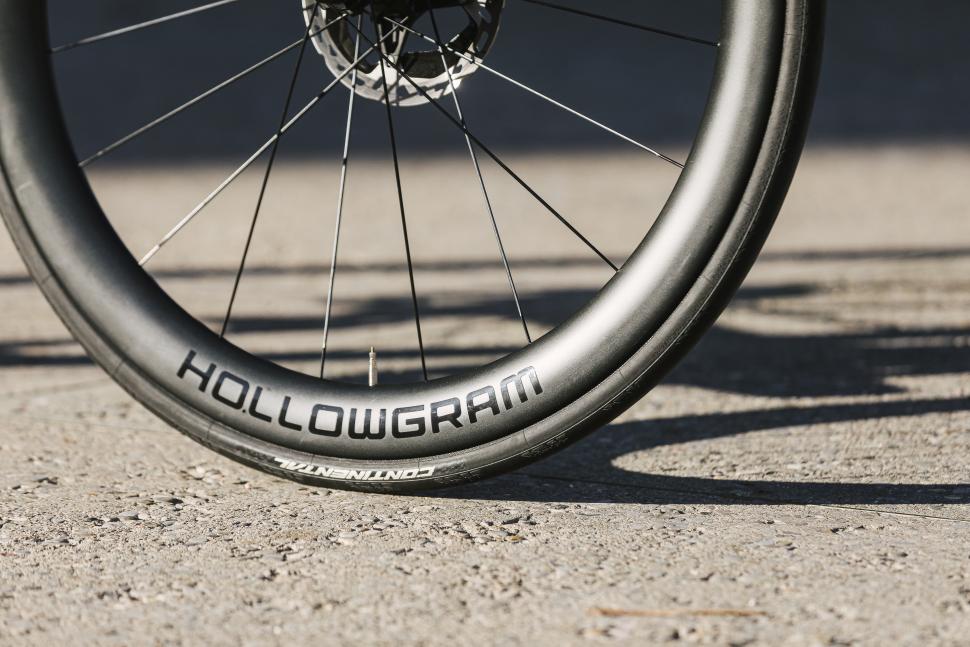
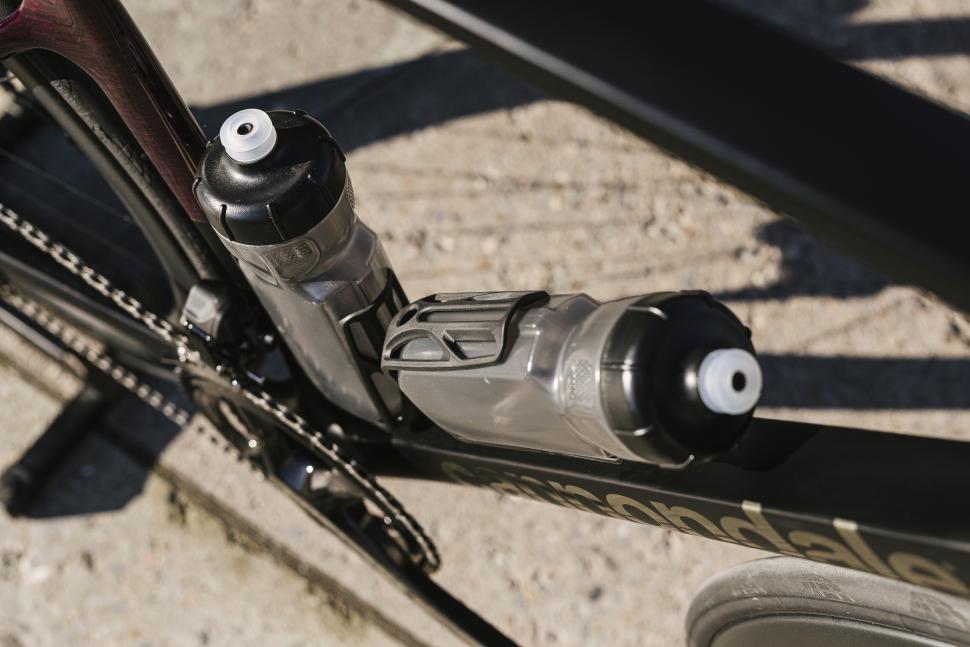

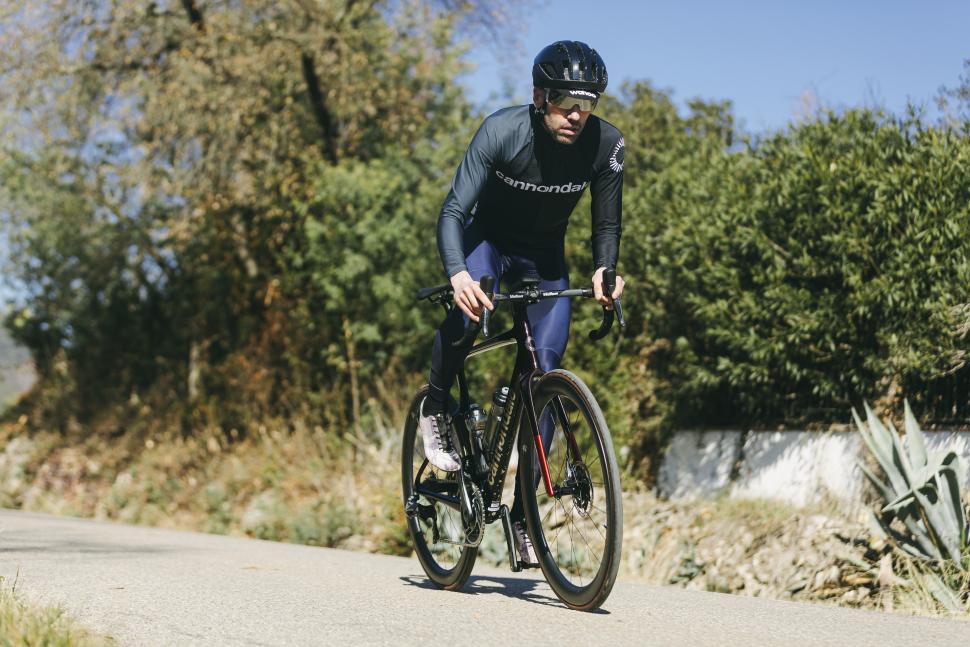

Add new comment
31 comments
I'm not sure I dare buy a bike with "provocative paintwork" in case it lands me in court for enraging a law-abiding motorist innocently travelling over me.
Pages